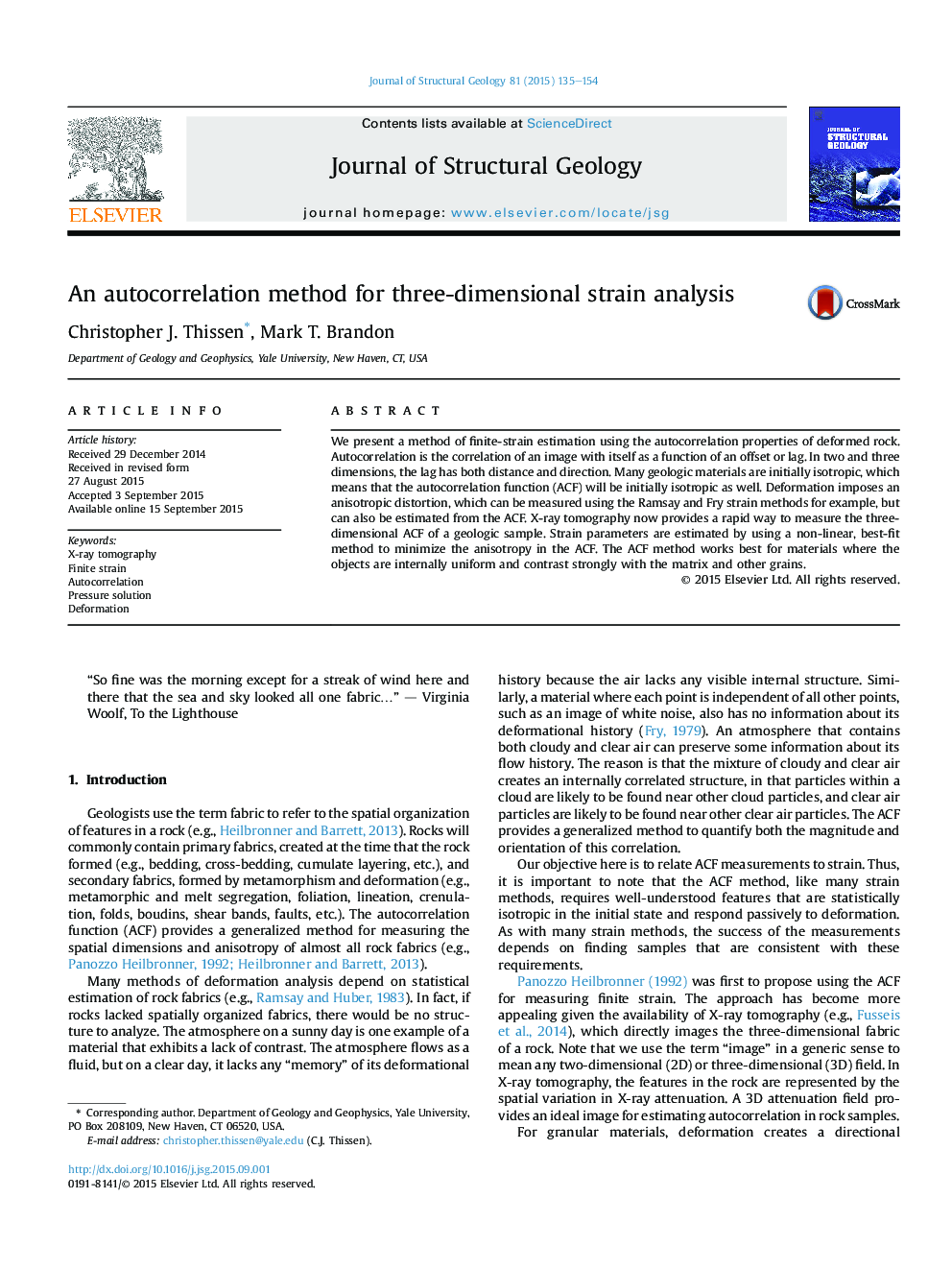| کد مقاله | کد نشریه | سال انتشار | مقاله انگلیسی | نسخه تمام متن |
|---|---|---|---|---|
| 4732925 | 1640499 | 2015 | 20 صفحه PDF | دانلود رایگان |
• Autocorrelation is sensitive to the shape, contrast, and spacing of fabric elements.
• The shape sensitivity can be used to estimate strain in 2D images and 3D tomograms.
• Strain parameters and uncertainties are estimated using least-squares program.
• ACF results compare well with Rf/ϕ, nearest-neighbor, and PDS results.
• The ACF method works best where grains have a uniform internal intensity and a strong contrast with other grains and matrix.
We present a method of finite-strain estimation using the autocorrelation properties of deformed rock. Autocorrelation is the correlation of an image with itself as a function of an offset or lag. In two and three dimensions, the lag has both distance and direction. Many geologic materials are initially isotropic, which means that the autocorrelation function (ACF) will be initially isotropic as well. Deformation imposes an anisotropic distortion, which can be measured using the Ramsay and Fry strain methods for example, but can also be estimated from the ACF. X-ray tomography now provides a rapid way to measure the three-dimensional ACF of a geologic sample. Strain parameters are estimated by using a non-linear, best-fit method to minimize the anisotropy in the ACF. The ACF method works best for materials where the objects are internally uniform and contrast strongly with the matrix and other grains.
Figure optionsDownload high-quality image (401 K)Download as PowerPoint slide
Journal: Journal of Structural Geology - Volume 81, December 2015, Pages 135–154
